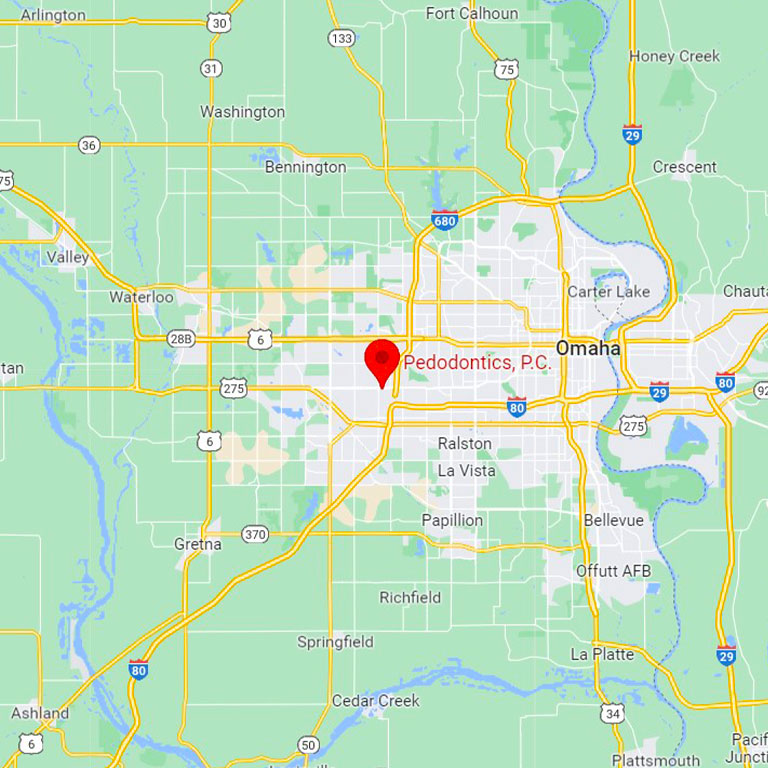Parts of Braces
Expert Children’s Orthodontic Treatment in Omaha, NE
At Pedodontics, P.C., our mission is to help each one of our young patients achieve a healthy, beautiful smile they feel proud of in any situation. We offer a wide variety of orthodontic treatment methods for children and adolescents, and our expert orthodontists strive to create individualized treatment plans that perfectly suit every patient’s unique orthodontic needs. We often hear questions from our patients asking about the function of braces – after all, with so many intricate little pieces, what do all the parts of braces do? As it turns out, each piece of your braces plays a specific role that, in combination with the other parts, helps to move your teeth to new positions.
Parts of Braces
Bands
Bands are rings made from metal, often colored to match the teeth that are cemented to the molars and premolars. Bands come in a variety of sizes, and we choose the size that best fits your teeth then adjust it to fit tightly. To hold the bands in place, we use a special dental cement that’s fluoridated to help protect against tooth decay. Once placed, they provide an anchor against with your braces apply pressure to the rest of your teeth.
Brackets
These are the small metal studs cemented on the front of each individual tooth. Brackets are what allow us to apply individual forces to each tooth: once the archwire is placed into the slot in the bracket, it can exert a force that, over time, causes the teeth to move. Similar to bands, brackets are set in place with a fluoridated dental cement.
Archwires
Archwires, the springy metal wires that run across each dental arch, do most of the heavy lifting of moving the teeth. Through the brackets, the archwire applies the gentle, constant force that causes the teeth to migrate through the mouth. We may use a lighter or heavier archwire depending on how we want to move the teeth, and we may put bends or kinks in the wires to help the wire apply force in a particular direction to move the teeth.
Alastics & Ligatures
Alastics are the small, colored rubber rings that wrap around the “wings” of the brackets and hold the archwire in place. These differ from elastics, which are the rubber bands that help bring the upper and lower jaw closer together. We offer alastics in a variety of colors, and you can even customize your braces using a number of different colored alastics. Ligatures are similar to alastics in function, but instead of rubber, they’re made from a very fine wire. We’ll use ligatures when we feel alastics aren’t strong enough to sufficiently hold the wire in place.
Hooks
Hooks are what they sound like: small metal hooks that extend off the brackets. Some hooks are removable, but most hooks are attached to the brackets. We use hooks to attach coil springs or elastics (rubber bands), which can help us adjust spacing issues or change the alignment of the jaws.
Coil Spring
Coil springs are devices that adjust spacing and crowding issues, and we can use them to push teeth apart or draw them together. An open coil spring creates space between the teeth: it slides onto the archwire and sits between two brackets, exerting an outward force on both to push the teeth apart. A closed coil spring does the opposite, exerting a contracting force that draws the teeth together.
Contact Your Omaha, NE Orthodontists
Now that you know how all the parts of braces work, why not see them in action? Orthodontic treatment is an investment in your best asset, and it’s never been easier to achieve a beautiful new smile. If you’re interested in learning more about treatment or starting on the path towards a new smile, we encourage you to give us call at 402-330-5913 with any questions or reach out to us at our contact page to schedule an appointment at our Omaha, NE office.



